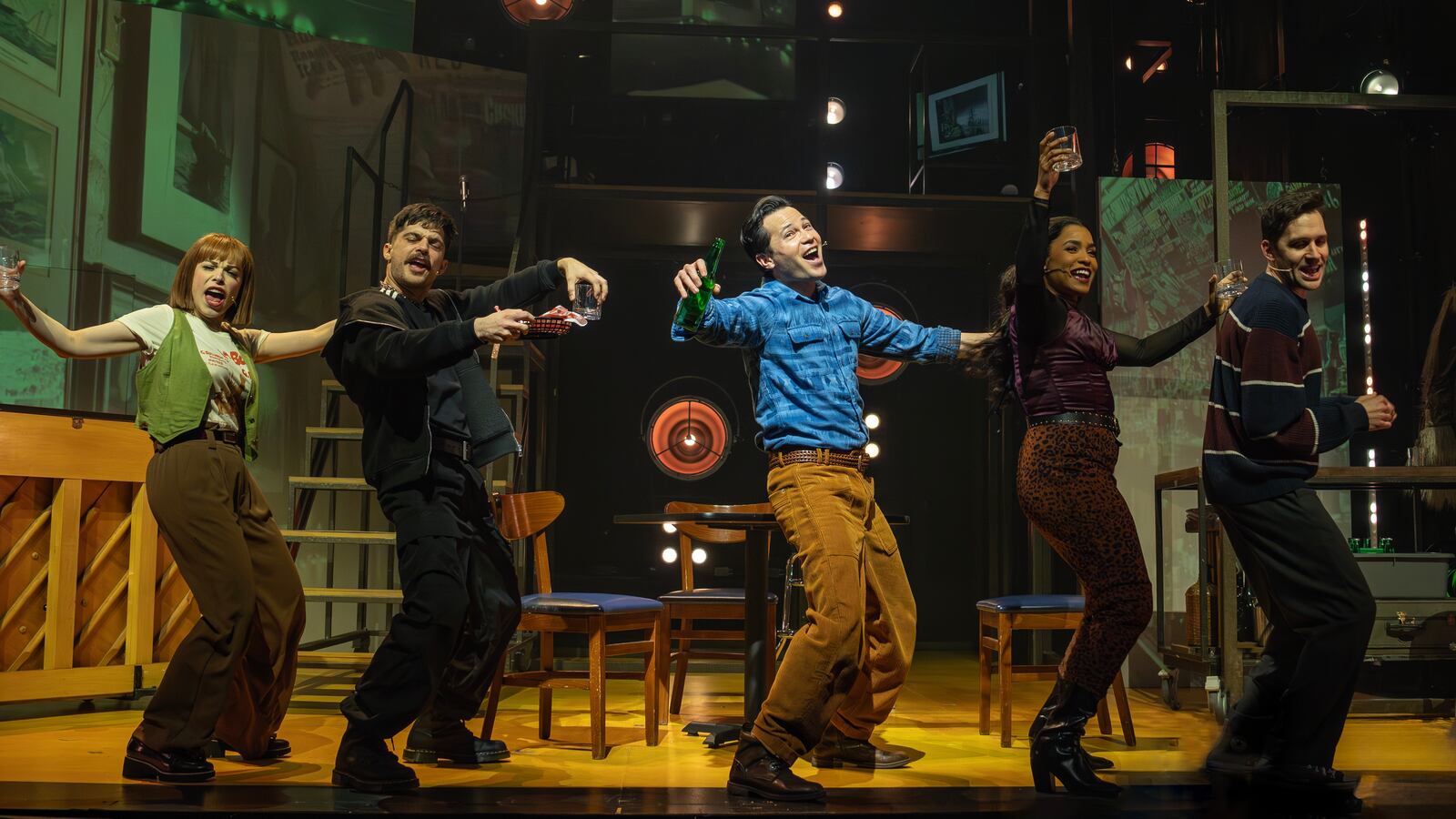“Rent saved my life” reads one scrawled message on a white-board full of similar sentiments, some quoting the legendary 1996 musical: “There’s only this!” “No day but today.” The white-boards—with markers provided—are in the entrance of the Orpheum Theatre in New York’s East Village for those coming to see The Jonathan Larson Project (booking to June 1), a revue of previously unperformed and unheard songs that Larson wrote either as solo works or as components of planned musicals.
As the scrawled testimonials reveal, there is something innately moving and charged about this production, conceived by Jennifer Ashley Tepper. Larson won the Pulitzer Prize for Drama in 1996 for Rent and died suddenly from an aortic dissection, aged 35, the day before the musical’s first off-Broadway preview at the New York Theatre Workshop. Rent went on to Broadway and worldwide fame and renown, its hallowed and much-loved status accentuated by its talented creator’s far-too-premature death.
These never-before-heard songs are not only important theatrical artifacts, but ones freighted with all the question marks—What would have come after Rent? What would Larson have done next?—attendant on a dazzling, accomplished life cut brutally short.
From the white-boards outside to the opening of the show itself, the memory of Larson—what he meant to people, what Rent means to people—is writ both large but also lacking. The show is a collection of songs, all sung powerfully and performed energetically (under John Simpkins’ lively direction), by Adam Chanler-Berat, Taylor Iman Jones, Lauren Marcus, Andy Mientus, and Jason Tam.

But the songs—in the main—are not memorable, and more fascinating in a glancing way than as revealing memorial echoes. Beyond their staging—just letting us know of their existence and excavation—what story does this show wish to tell? Perhaps the idea is to let the music do all the talking. That might be a genuine and poetically seductive intention, but The Jonathan Larson Project feels incomplete and insubstantial.
Rent shows that Larson was a genius, but this memorial to him is somewhat flimsy—and very hit-and-miss. As with all revues, some of the songs in The Jonathan Larson Project are good, but many are not. The fascination aspect—these are the unknown works of a much-loved composer revealed for the first time to a mass audience—is diluted by the fact that many have that soft-rock thrum of many of the Rent songs, and they suffer in comparison to the latter.
The show begins with screens on stage very briefly reciting the death of Larson and global, all-conquering success of Rent. This framing, and the positioning of a piano and empty seat on stage emphasizing Larson’s missing presence, first suggests something deeper than a revue.
But no, it’s songs only. There is a very helpful and illuminating leaflet supplied with the Playbill, which goes into detail about the source or genesis of the songs. The second, “One of These Days,” is from a planned futuristic dystopian musical, Superbia, while the first standout number of the show—thanks to Marcus, a fizzingly kinetic presence on stage—is “Break Out the Booze,” a cabaret-style number which suggests we do as the title suggests given the parlous political situation Larson felt Americans were then living under.

Rent is grounded in Larson’s own bristling rage at the right-wing bigotries of the ’90s (particularly at a time when so many were dying of AIDS), and this anger and conviction are present throughout The Jonathan Larson Project. For many, it may resonate sharply with the present day, as minorities and marginalized communities both experience the unfolding animus of the Trump administration, while asking themselves (another recurring theme in Larson’s work), how one can effectively move beyond hurt, grief and fury to resist, fight back, and love.
Sadly, many of the songs, however worthily intentioned, lack the spark and precise pizazz of so many of the songs in Rent. Even when they’re not political in focus, and more about louche lost nights, desire, love, and consumerism—like “Casual Sex, Pizza, and Beer,” “Out of My Dreams,” and “Hosing the Furniture”—too often they sound dirgy and repetitive.

However, the performers sing and sell them brilliantly, and throughout what keeps you rooted is wondering all those what-ifs of Larson himself. Even when the songs don’t hit they are evidence of an endlessly inquiring musical mind. He saw so much of life around him, felt it so keenly, and had so much of it left to live. Perhaps the show is best seen as rifling through a cabinet of curios, and nothing more encyclopedic or defining.
The Jonathan Larson Project would benefit from adding a story or narrative element that breaks up and unpacks the music or Larson himself, as illuminatingly as the inserted leaflets attempt. But without that—and appropriately, given how important any theater-maker knows it is to close out strong—we reach two final songs, “Love Heals” and “Piano,” which are rousing, wonderful humdingers, and (at last in this show) a fitting musical memorial to the genius of Jonathan Larson.









